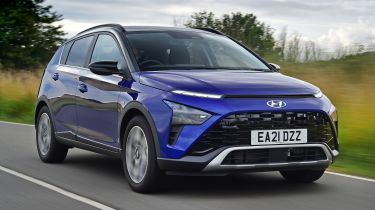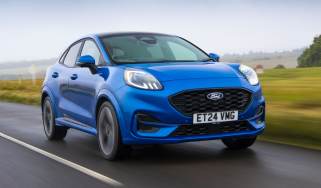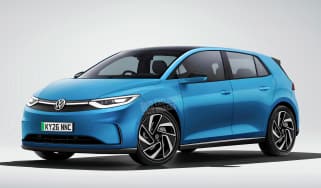Hyundai Bayon review
The Hyundai Bayon is a fine small SUV, with striking looks, impressive levels of refinement and useful on-board tech

The Hyundai Bayon is a small SUV that takes on the Skoda Kamiq and SEAT Arona, and while its styling is really eye-catching, it’s actually pretty conventional under the skin. It offers a no-nonsense, practical, well-equipped and easy-to-drive package, although it doesn’t stand out when it comes to the driving experience or with its interior. But, it gets the small things right and we reckon it’s right on target for the buyers it’s aimed at.
There are many alternatives; if you want a compact SUV that’s good to drive, there’s the Ford Puma, or if you want one that’s more upmarket, try the Volkswagen T-Cross. Yet if you like how the Bayon looks, it’s worth considering as a small but practical family car.
About the Hyundai Bayon
The Hyundai Bayon is a small SUV that takes on the SEAT Arona, VW T-Cross, Skoda Kamiq and Ford Puma. There are plenty of other rivals as well, including the Peugeot 2008, Renault Captur, Citroen C3 Aircross, Vauxhall Mokka and more - it’s a heavily saturated part of the market.
In order to help the new model stand out, Hyundai has given the Bayon an unusual exterior look, despite its ordinary underpinnings - it’s based on the same set of parts as the i20 supermini.
The slim lights, split grille and angular bodywork at the front give it a unique face, while the rear end features a zig-zag look with inward-pointing taillights and only a small section of painted bodywork on the boot door. The looks also help the Bayon to stand apart from the much more conventional Hyundai Kona, which is another small SUV to consider.
While the Kona has hybrid and even high-performance ‘N’ versions, the Bayon is offered with just two engines, both 1.0-litre three-cylinder petrols. The first has 99bhp and 172Nm of torque, while the second has 118bhp but the same 172Nm of torque. Both use 48v mild hybrid assistance to boost efficiency, and are available with a six-speed manual or a seven-speed dual-clutch automatic gearbox.
The trim range starts with SE Connect, which has 16-inch wheels, auto high beams, cruise control, rear parking sensors, a 10.25-inch screen behind the wheel and an eight-inch central touchscreen display with smartphone connectivity.
Premium is next and adds 17-inch wheels, tinted windows, LED headlights and a larger 10.25-inch touchscreen. Top-spec Ultimate trim has some extra kit including a Bose stereo and upgraded trim but it’s probably not worth the upgrade.
Prices start at around £21,000, rising to £27,000, so the Bayon is pretty competitive considering how much kit you get even on the entry-level cars. The Bayon is easy to drive, comfortable and practical, so it’s well worth considering.
For an alternative review of the Hyundai Bayon, visit our sister site carbuyer.co.uk...













